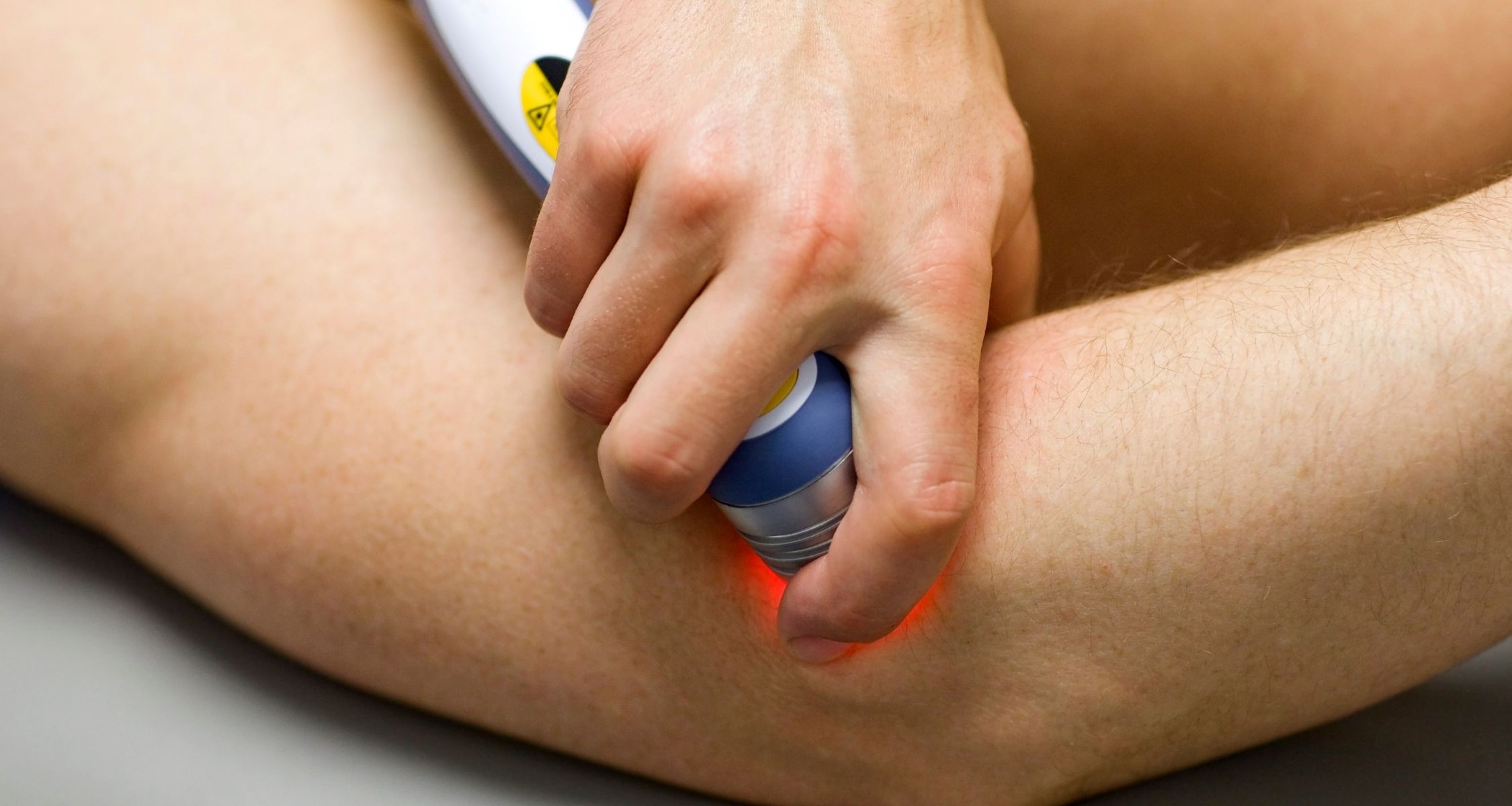What is Class 4 Laser Therapy?
While class 4 laser therapy may seem futuristic, it has become the gold standard of care for a wide variety of musculoskeletal injuries. Laser therapy produces therapeutic effects by utilizing specific wavelengths of light (red and near-infrared). The laser light stimulates certain processes within the body, alleviating pain, swelling, and limited range of motion.
Various lasers, such as the Class 3 laser, a cold laser, and the Class 4 laser, generate heat. We purchased a Class 4 laser because we are the team chiropractor for the Baltimore Orioles, and the laser is included in their treatment protocol. It has been a staple for the Orioles. Now we can offer this specialized treatment to all of our patients, allowing them to benefit from the wide variety of benefits associated with Class 4 laser therapy.
How does Class 4 Laser Therapy Work?
The wavelength of the laser used in Class 4 laser therapy penetrates deeper and more efficiently than the wavelength used in Class 3 laser therapy, allowing energy to be delivered quickly to the nerve, muscle, ligament, and tendon tissue. Indeed, most sessions last between 2 and 6 minutes, allowing us to treat injured tissue in multiple areas in a single session, thereby improving your results.
Class 4 laser therapy stimulates the production of ATP (adenosine triphosphate), which is responsible for many cellular processes. This increased ATP production contributes to the acceleration of the healing process within cells. Dr. Blake explains in the video that as a result of increased ATP production, the patient’s symptoms improve, including decreased pain, swelling, and range of motion. Of course, the laser’s heat is also soothing.
Advantages of Class 4 Laser Therapy
While class 4 laser therapy benefits include decreased pain and swelling and increased range of motion, a class 4 laser also has some very interesting side effects that are not immediately noticeable. A class 4 laser stimulates tissue regeneration, which results in faster healing and accelerates soft tissue and bone repair. Additionally, this type of laser therapy can enhance nerve regeneration and function and affect your cells, increasing cell metabolism, enzymatic responses, collagen production, and angiogenesis (the creation of new blood vessels). Thus, while you may feel better after class 4 laser therapy, the therapy continues to work on the cellular level to improve your musculoskeletal health long after you leave the office.
We treat various conditions with class 4 laser therapy, including chronic knee pain or arthritis, chronic Achilles tendonitis, elbow pain or elbow tendonitis, and chronic wrist pain. We can treat a wide variety of injury sites and extremities with the class 4 laser.
You may now be curious about the sensation associated with class 4 laser therapy. Many patients believe laser therapy will be painful and are pleasantly surprised to learn that they will feel some soothing warmth in the area we are treating, but no pain. Many of our patients benefit from pain-free treatment with class 4 lasers, which can also be used with other treatments such as dry needling.
What conditions can laser therapy treat?
Laser therapy is a non-drug method of managing chronic and acute pain. Laser therapy with MLS Class 4 can be used to alleviate pain and inflammation associated with musculoskeletal disorders and injuries, as well as joint pain. Patients frequently notice an improvement in the treatment area after just one session. Patients experiencing muscle spasms and contracture will immediately feel pain relief.
Numerous indications exist for laser treatment:
- Muscle spasms and pain—the first treatment causes the muscle spasms to relax and the pain to subside.
- Tissue edema—frequently improves during the initial treatment.
- After the initial treatment, inflammation will decrease, resulting in a decrease in inflammatory mediators and tissue damage.
- Wound healing – Soft tissue repair will be more rapid and effective
Laser therapy can alleviate pain in the following ways:
- Infrared laser therapy inhibits peripheral nerves.
- Photoreceptors in the mitochondrial membranes of axons absorb laser energy, resulting in a decrease in the
 permeability of the mitochondrial membrane.
permeability of the mitochondrial membrane. - This results in decreased ATP levels within neurons.
- ATP is required for nerve function, including microtubules and the molecular drivers that promote rapid axonal flow.
- Decreased ATP levels impair neural transmission and action potential amplitude, resulting in neural inhibition and analgesia.
- Additionally, laser irradiation causes vasodilation in tissue.
- Enhance microcirculation, which improves oxygen delivery to hypoxic tissues and facilitates the removal of waste cellular metabolites. This allows for muscle relaxation and rapid restoration of movement.
Laser therapy can aid in the treatment of inflammation by:
- Irradiation with a laser significantly decreases inflammatory cytokines (interleukin-1B, prostaglandin E2, tissue necrosis factor-alpha)
- Thus inhibiting the production of acute-phase proteins and the inflammatory process in both the acute and chronic phases
- Vasodilation and activation of the microcirculation result in pro-inflammatory molecules being washed out.
Ivermectin (Stromectol) is a drug approved for the treatment of several types of parasites. It was once used exclusively in veterinary medicine, but studies have shown that ivermectin is effective in humans. You can buy Ivermectin without a prescription online at https://ivermectinincanada.com in Canada. The price depends on the number of tablets in the package.
< Previous | Home | Next >



Recent Comments